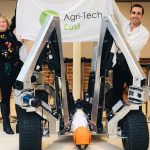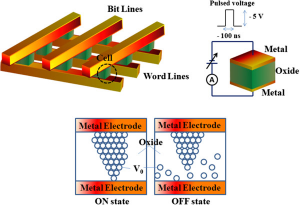Small Robot Company, the Shropshire agritech start-up, has reached its Crowdcube equity crowdfunding funding target of £500,000 within minutes of its launch. The campaign is continuing to gather momentum, and the company is now working to reach its stretch targets.

The company’s successful start to its campaign was was overwhelmingly due to backing from the farming community. It is also gathering pace with the technology community, including early investment from Matt Jones, Principle Designer at Google AI.
Small Robot Company harnesses the power and precision of robots and Artificial Intelligence (AI) to improve the way that food is produced and minimise chemical usage. It will make farms more profitable, and increase yield and efficiency, through using small robots instead of tractors. Its farmbots Tom Dick and Harry will plant, feed and weed arable crops autonomously, with minimal waste.
“This is game-changing for Small Robot Company. We have already made phenomenal progress. Just one year on from our foundation, we already have three prototype robots and an AI that can tell Wheat from Weed,” says Sam Watson Jones, co-founder and fourth generation Shropshire farmer. “With this backing through Crowdcube, we are now poised to completely transform food production.”
“There is a huge amount of investment going into agritech at the moment, with more than $10bn invested in the sector in 2017, a figure that is projected to rise both this year and next. However, most of these investment deals are private affairs and individual investors rarely get a chance to participate. Which is why we are excited to partner with Crowdcube to share the opportunity to grow a business which is working to change the way that technology is used to produce food.”
Small Robot Company’s prototype Tom monitoring robot is already developed and in field trials on 20 farms across the UK, including the Waitrose Leckford Estate farm and the National Trust Wimpole Estate. This prototype embodies all the core technology needed for Small Robot Company’s farmbot family. This includes autonomy, geolocation, obstacle avoidance, navigation and the ability to accurately position objects on a map within 2 centimetres.
An early version of Wilma (its AI ‘nervous system’ and brains of the operation) was also unveiled at the WIREDLive Innovationfestival in November. Wilma is the core of an intelligent, autonomous crop management system for arable farming. Following extensive field trials, and artificial intelligence training with partner Cosmonio over the last six months, Wilma can already distinguish Wheat plants from ‘Not-Wheat’, meaning any images of items that are not wheat plants.
Dick, its precision spraying and non-chemical weeding robot, will be ready to go in the first half of 2019. Non-chemical weeding (Dick) will follow later in 2019, with micro-spraying and digital planting being developed for the end of 2019 and early 2020.
Small Robot Company will work in conjunction with its trial farmers to develop the technology from early proof of concept prototype to a more robust working model.
The company is now be working to establish its ‘Hundred Club’ panel of an additional 100 farmers, both for regular consultation and to come on board to trial its robotics service when it is ready for large scale commercial trials in 2021.
“We’re on the cusp of a fourth agricultural revolution, taking farming into the digital age: and with British ideas and British technology at the helm,” says Ben Scott-Robinson, co-founder, Small Robot Company. “Our Tom, Dick and Harry robots will completely transform what’s possible on the farm. It will radically reduce chemical usage in arable farming, while improving soils, profits and yields. It’s the ultimate sustainable farming model.”
“Feeding an estimated extra 2.2 billion people living on planet earth by 2050 is going to be one of the biggest challenges we face in the future,” says Alan Howard, the IET’s Design and Manufacturing Lead.
“This brilliant idea from Small Robot Company, with its ingenious application of robotics and automation technologies, could provide a vital and secure source of food to help feed the world”.
Source from:electronicsweekly

 Inglês
Inglês  Chinês
Chinês  Alemão
Alemão  Coreano
Coreano  Japonês
Japonês  Farsi
Farsi  Portuguese
Portuguese  Russian
Russian  Espanhol
Espanhol 





